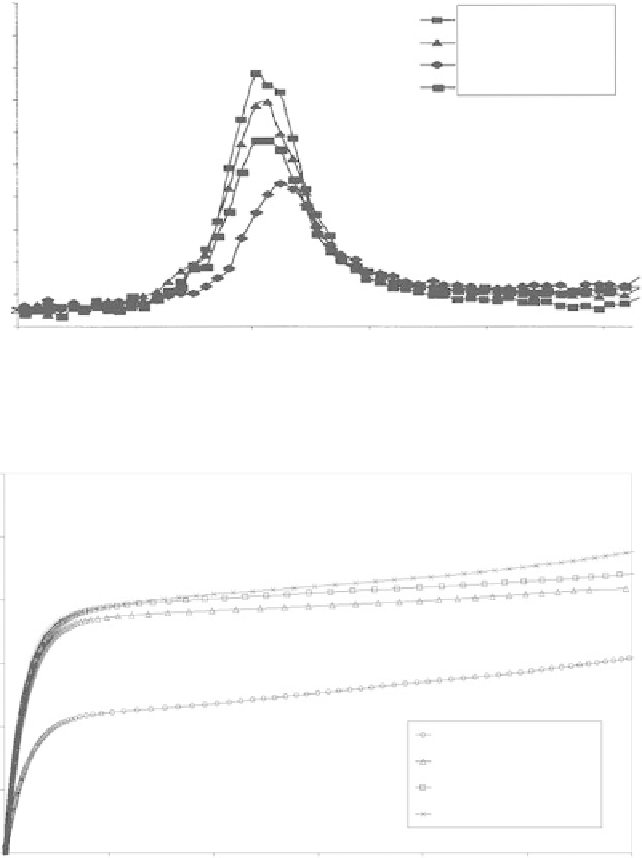Biomedical Engineering Reference
In-Depth Information
0.5
Pure Matrix
10% filler
30% filler
20% filler
0.45
0.4
0.35
0.3
0.25
0.2
0.15
0.1
0.05
0
−
80
−
60
−
40
−
20
0
20
Temp
°
C
Figure8.16
Tan
δ
plotsfortheneatplasticandthereinforcedcomposites.
6.0
5.0
4.0
3.0
2.0
Cellulose Nonanoate
Cellulose Nonanoate + 5 % C9
Cellulose Nonanoate + 10 % C9
Cellulose Nonanoate + 15 % C9
1.0
0.0
0
20
40
60
% Strain
80
100
120
Figure 8.17
Stress-strain curves for the C-9 cellulose ester reinforced with C-9 surface
derivatizedchitinnanoparticles.
behavior marks the yield stress. It is also observed that much of the mechanical rein-
forcement gained is achievable with only 5 wt% filler loadings. The mechanical data
provided for both cellulose and chitin nanoparticles demonstrates that these biomaterials
have great potential for providing mechanical reinforcement to elastomeric thermoplastics
when used as filler materials in composite applications.

Search WWH ::

Custom Search